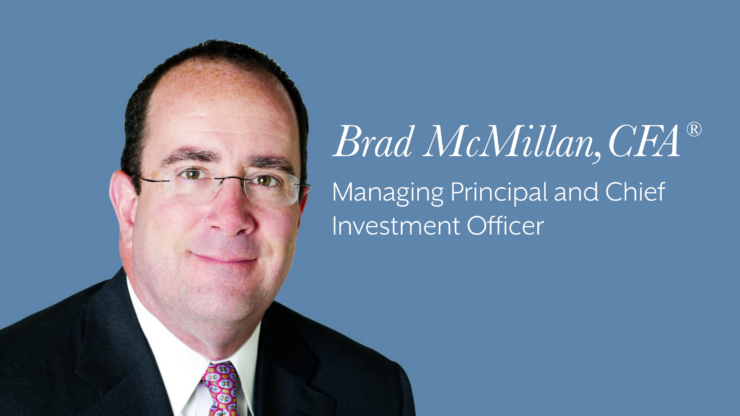4 Things to Know Your Old 401(K) When Changing Jobs
February 27, 2019
New Job? What do you do with your old employer-sponsored 401(k) retirement plan? Explore four options available to you during an employment transition.
In general, human beings dislike change. Change makes us rethink things, and possibly step out of our comfort zone. But changes also can lead to new opportunities…
One of those oftentimes overlooked opportunities is associated with a change in employment and deciding what to do with your retirement savings in old employer-sponsored retirement plans. In other words, asking yourself the question, “Should I leave the investments in my former employer’s plan, cash it out or roll the money over into an Individual Retirement Account (IRA) or into my new employer’s retirement plan?” Since the savings you have accumulated over the years could be a substantial amount – in many cases your largest retirement asset – the answer to these questions may have a big impact on your planning. Therefore, it is important to explore all four options available to you during an employment transition. Please note, for simplicity of this article, we will use “401(k)” but understand this term is synonymous for a 403(b) plan, TSP or other defined contribution plans.
1. Cash Out the Account
When you leave your current employer, you have the option to withdraw your 401(k) funds (e.g. cash out and take the money). Once you request a check to be issued by your plan administrator, that money is available to be used immediately, however you choose to use it. This cash-out option can help pay for unexpected expenses such as medical bills, college tuition, or towards a large purchase such as a car or a home.
This is a tempting avenue to consider, but leaves you subject to potentially significant tax consequences and possibly penalties while missing out on the continued tax-deferred, and possibly tax-free, growth offered by retirement savings vehicles. Taking a cash distribution will likely reduce your retirement savings due to the aforementioned taxes. Also, you will pay federal (and possibly state) income tax on the entire distribution while also paying a 10 percent penalty if you are under 59 ½ years of age. Your employer is required to withhold 20 percent of your distribution for federal taxes, making the amount of cash you receive significantly less than you might have been expecting based on your tax bracket.
2. Keep Your Funds Where They Are
Another option when changing jobs is to simply leave the account in your previous employer’ plan, where it will continue to grow tax-deferred and potentially tax-free if it is a Roth 401(k). This is a convenient option; however, this may not always be available to you. If you like the investment options in your old retirement plan, then leaving your money there will allow you to continue with that investment strategy.
Most employers will require a minimum account balance to keep assets in their plans. If your vested balance is less than $5,000, your previous employer can require you to take your money out of the plan when you leave the company. Your employer may also require you to withdraw the funds once you reach the plan’s normal retirement age. You will be issued a special tax notice providing you with your plan’s distribution options when you terminate employment. In addition, it is important to review the company’s policy with the plan administrator or Summary Plan Description that you should receive each year.
One disadvantage with this strategy is, between old employer plans and other investment accounts, it is easy to “forget” about an account. That may seem like a foreign concept to some and you may be saying to yourself, “I would never forget about my money”. However, with a combined 25 years’ experience, we have seen this happen many times! Or perhaps, and let’s face it, life is busy; it sometimes becomes difficult to manage your overall asset allocation when you have various accounts and plans with different custodians.
Another consideration would include, “Are the investments you chose still the most cost-effective given the vast amount of exchange traded funds or other low cost investment vehicles?” There are close to 2,000 exchange traded funds available at an average cost of .44%, as stated by the Wall Street Journal. Most retirement plans offer mutual funds which may be more expensive than exchange-traded funds and could be a reason to consider consolidating your retirement plans.
3. Roll Your Assets into Your New Employer’s Plan
Just as you can easily withdraw your money from your old 401(k), you can also roll those funds into your new employer’s retirement plan. Managing all of your retirement assets in one place is highly simplistic, while making it much easier to track your progress toward your retirement goals. Though it is important to talk with your new plan administrator about any applicable rules or restrictions, since not all plan documents accept rollovers from another plan.
Once you complete the necessary paperwork, your 401(k) funds will transfer directly into your new employer’s retirement plan (called a trustee-to-trustee transfer). Assuming you properly roll over your 401(k), no federal income tax will be withheld, allowing you to continue to receive tax-deferred growth. This means that you can keep your money invested and working for you longer. One thing to keep in mind, however, is that the new employer retirement plan may have a limited or more expensive investment selection. The administrative fees may also be more expensive than your prior employers plan.
4. Reinvest Your Funds into a Rollover IRA
Similar to rolling over your old 401(k) funds into your new employer’s retirement plan, you also have the option to rollover those funds into an IRA. This IRA can be either a traditional or Roth (depending on if your assets were pre-tax or post-tax). If you do not already have an IRA established, that is fine; it’s very easy to open an IRA. It is important to note that unlike 401(k) plans, if you are still working, you must take Required Minimum Distributions (RMDs) once you reach age 70 ½ from your IRA. This is NOT the case if it remains in your current employer’s 401k and you are still working for the employer.
Generally, the best way to roll over funds is to have your 401(k) plan directly transfer those funds into the established IRA. A direct rollover is the easiest way to move into a Rollover IRA. It is a seamless process that allows your retirement savings to remain tax-deferred without interruption. With an IRA, you typically have a wider variety of investment options when compared to the typical employer sponsored plan. Also, there are no taxes or penalties for the direct rollover, since it is declared a “tax-neutral” event. An important point to note is that if your funds are kept in an employer sponsored plan, you can make withdrawals if you have separated from service after age 55, without penalty, unlike an IRA where you need to be at least 59 ½ years of age for qualified withdrawals. Also, assets in your employer sponsored 401k plan are kept in a separate trust and are protected from creditors. Your assets in an IRA may not be.
It’s Up to You
Your decision whether or not to rollover your assets from an employer-sponsored plan into an IRA is an important one. In many cases, you don’t have to act immediately upon switching jobs. As with any important financial decision in your life, please discuss your unique situation with your financial advisor to determine which option is right for you and your family.
Let the Certified Financial Planner® professionals at Williams Asset Management help with your wealth management needs. Whether you need comprehensive and holistic financial planning or investment management, we can help! We are fee-based, independent financial advisors located in Columbia, the heart of Howard County, Maryland. Schedule your complimentary consultation today by calling (410) 740-0220!


